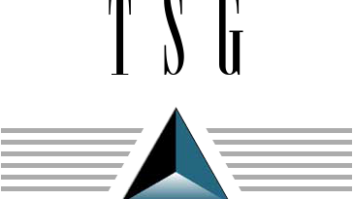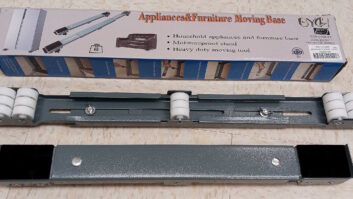Many years ago, more than I’d want to admit, I taught economics as part of an “engineering economy” section.
Economics, unlike physics or mathematics, is about as inexact as a “science” can be. For that reason you can have and defend any theories you want. With this license and for the purposes of stimulating the exploration of more generally recognized principles, I developed The Laws of Fitch.
This was a lot of fun (at least for me), although in retrospect I feel sorry for all those indentured students.
Of those laws, my favorite is No. 1: “The future gets here when someone is willing to pay for it.” There can be few better examples of this than satellite technology.
Visionary
The late futurist and writer Arthur C. Clarke generally is viewed as having been first to propose the concept of geostationary orbiting satellites for communications use.
His first article, a 1945 piece for Wireless World, described the use of manned satellites in 24-hour orbits high above the world’s land masses to distribute television programs.
Clarke was specific in detailing a workable system; yet it took nearly another 30 years before someone was ready to pay for communications satellites for broadcasting.
Real-time, terrestrial, distribution/transmission of network TV and radio has always been costly and prone to point-of-failure disruption through miles of cable and multiple microwave hops. In some cases, creation of such a system was impossible, such as TV service to Hawaii and Alaska using undersea copper cable; this was one of the first uses of satellites worth the money in the ’70s. Shortly thereafter radio networks such as ABC, RKO and Satellite Music hitched a ride on these TV birds.
Someone willing to pay for it had been found.
Components
A working satellite system has 3-1/2 operative components.
The first is the satellite itself, which for our uses is basically a radio repeater in space. The “bird” is positioned to fly at 6,877 mph in an orbit around the equator at a distance of a bit more than 22,000 miles above the earth’s surface. That speed matches the rotation of the earth turning below so that the relative position of the satellite over a spot on the equator never changes. The speed is just under the escape velocity that would throw the bird out into space.
The second component is the uplink, essentially a glorified microwave transmitter installation with high-powered amplifiers and usually as big an antenna as the budget can afford or the techs can handle to narrow the beam width into a tight focus.
Think of the factors that influence 950 MHz STL paths that struggle to make distances such as 30 miles; then ratchet up your thinking of the alignment and loss budget to reach a moving target 22,000 miles away at three or more octaves higher in frequency. Quite a challenge.
The third component is the downlink or receiver site. You know these; because satellite delivery is a ubiquitous radio programming tool, there may be five or more working dishes associated with your station — possibly 10 out in the yard, if you haven’t bothered to take the old dishes down.
The remaining “half” component is the control station. This command center tracks and positions the owner’s satellite to keep this immense investment up there and “in the box.”
Satellites are not static devices. We don’t throw them up there with a rocket slingshot and expect them to stay put.
As the earth turns on its vertical axis and the winds of space (not to mention gravity) assault these high-tech space vehicles, onboard propulsion devices (miniature thruster rockets in older birds, ion pumps in the newer models) shuttle them around following instructions from the ground to position them so that they are always where your receive dish is pointed.
The “payload” (the industry euphemism for the configuration of the bird) is selected to maximize revenue generation (remember, someone has to pay for all this; only when that’s done is it time for profit).
As mentioned, these space platforms are repeaters. In the KISS philosophy, transponders are used where the incoming signal is merely shifted in frequency, amplified and sent back out.
The control station also has management over transponder power out, whether the signal is crossbanded (perhaps taking a C band signal in and putting a Ka band signal out) and selection of outgoing antenna.
The process of getting a moneymaking satellite running is a morass of decisions and actions including governmental approval. International agreements will guide selection of orbital slots, frequency bands, polarity format and receive footprint (what part of the earth you want to serve).
How you divide up the spectrum into channels, the count of transponders, the nominal powers used and the selection of transmit antennas are decisions that, though subject to convention, are within the purview of the operator.
Power used by the transponders plays directly into the size of the solar array needed and the onboard battery storage size required for when the bird is not receiving sunlight. Because these items have a direct effect on the satellite’s usable life cycle, these choices are critical.
We mentioned outgoing antennas; the latest birds have multiple choices including spot beam antennas. With these, lower power can be used if service is only needed in a small area on earth, also allowing a frequency to be reused without interference, perhaps on both the East and West Coasts for example.
Earthside
We’ll leave the birds to the financial heavy hitters for the moment. What about our end of the system on the ground here at the station?
Outside, in the yard, up on the roof, sometimes even out at the transmitter or mounted on the tower is the microwave antenna — the dish — used to receive those satellite transmissions.
Our STLs at 950 MHz essentially obey optical principles, and these microwave signals from space do too. Solid objects such as buildings will mask the signal completely; so can leaves that grow into the path in the springtime. Bare trees waving in the wind, rain, heavy fog, and snow or ice on the dish will attenuate the signals. Even heavy dirt on the dish can be a factor.
Also, because we’re dealing with microwave frequencies where loss in coax is measured in inches rather than feet, the sooner we can get down to frequencies we can deal with, the better.
For that reason, most often the antenna will have a combination device at the signal focus, the Low Noise Block converter. A polarity sensitive “feed horn” antenna couples signals into the LNB in which these microwave signals are shifted down to something usable, such as 1 gigahertz or 400 MHz.
At these frequencies, the signals of interest can travel far greater coax distances to a convenient location where the receiver demodulates those signals into a format we can use.
On really long cable runs or when there are dissimilar grounds at each end of the circuit or in the presence of much electromagnetic interference, these down-converted signals are modulated into light and sent on fiber optic cable instead.
Best practices
As happens with most technology, cost and complication have come down while reliability and features have come up. Today’s earth station systems are far less expensive and finicky than those of even a decade ago.
Pragmatically speaking, however, users should be aware of good engineering practices that will always be with us.

- GEP suggests that the best performance and reliability come from the best installations. Do it right the first time and you’ll never have to come back to it.
- Support and attach the dish to its mount as well as you can. Alignment tolerances are less then +/- 1 degree in most cases. Even the smallest allowable movement can take you off the air.
- To avoid loss of alignment from pole rotation always install “spurs” on mounting poles sunk in concrete. For poles used with small dishes (24 inches or less), these can be as simple as drilling two holes near the bottom of the pipe and sending pieces of continuous thread (allthread) through those holes in quadrature. On larger poles it’s best to weld angle iron onto the pole.
- In areas of severe frost heaves, make certain that any satellite mounting foundations are proper for the region and that they get under the “frost line.” In high latitudes, frost heaves can move even huge dishes way out of alignment.
- Find a location that has a completely clear view of the satellite of interest in all seasons and, if at all possible, can “see” the balance of the equatorial satellite horizon. Cost pressures beat all of us into the ground; programmers will change carriers to follow the lowest cost, and you may need to find that new bird quickly.
- Treat your sat RF connections even better than you would your STL. Use the lowest-loss, highest-quality connectors and cables available, avoid splices no matter how pretty, minimize the jumper count, ground and ground as often as possible especially the dish assembly, the LNB, the coax, the receiver frame, etc.
- Make certain that the DC that powers the LNB is really pure DC and that it is the right voltage at the LNB.
- Keep notes of signal levels and bit error rates over time and channels so that you have some benchmark data at troubleshooting time.
- On digital systems a peak alignment using just the receiver is best obtained by minimizing the eb/no value. The receiver takes some time to update the display of the error rate so adjust very slowly while monitoring the demodulated audio to make certain that you are peaking up the desire signal.
- Carefully seal up the feed horn assembly to avoid creating a year-round bug hotel. Bug bodies are great RF attenuators especially when a zillion of them are jammed in your feedhorn.
- After peaking fixed dishes, you should mark their alignment with durable indicators so if the dish is moved by high winds or an aberrant auto bumper, you can quickly restore them to the approximately correct orientation to relocate the signal.
The appearance of satellite technology for program delivery was a great leap, retiring frequency-limited and noise-challenged wire and radio circuits throughout the nation.
As a young consulting engineer I visited one of the first stations on the RKO satellite network. The station’s production room had the net pot open, and just before the news I heard the network announcer practicing his opening copy. My comment to the station staff was that this fellow had a great voice. I asked, “How long has he been working here?”
I thought the fellow was in the next room, not 50,000 miles away in New York. Doncha just love satellites?
Charles S. Fitch, W2IPI, is a registered professional consultant engineer, member of the AFCCE, senior member of the SBE, lifetime CPBE with AMD, licensed electrical contractor, former station owner and former director of engineering of WTIC(TV) in Hartford, Conn., and WHSH(TV) in Marlborough, Mass.












